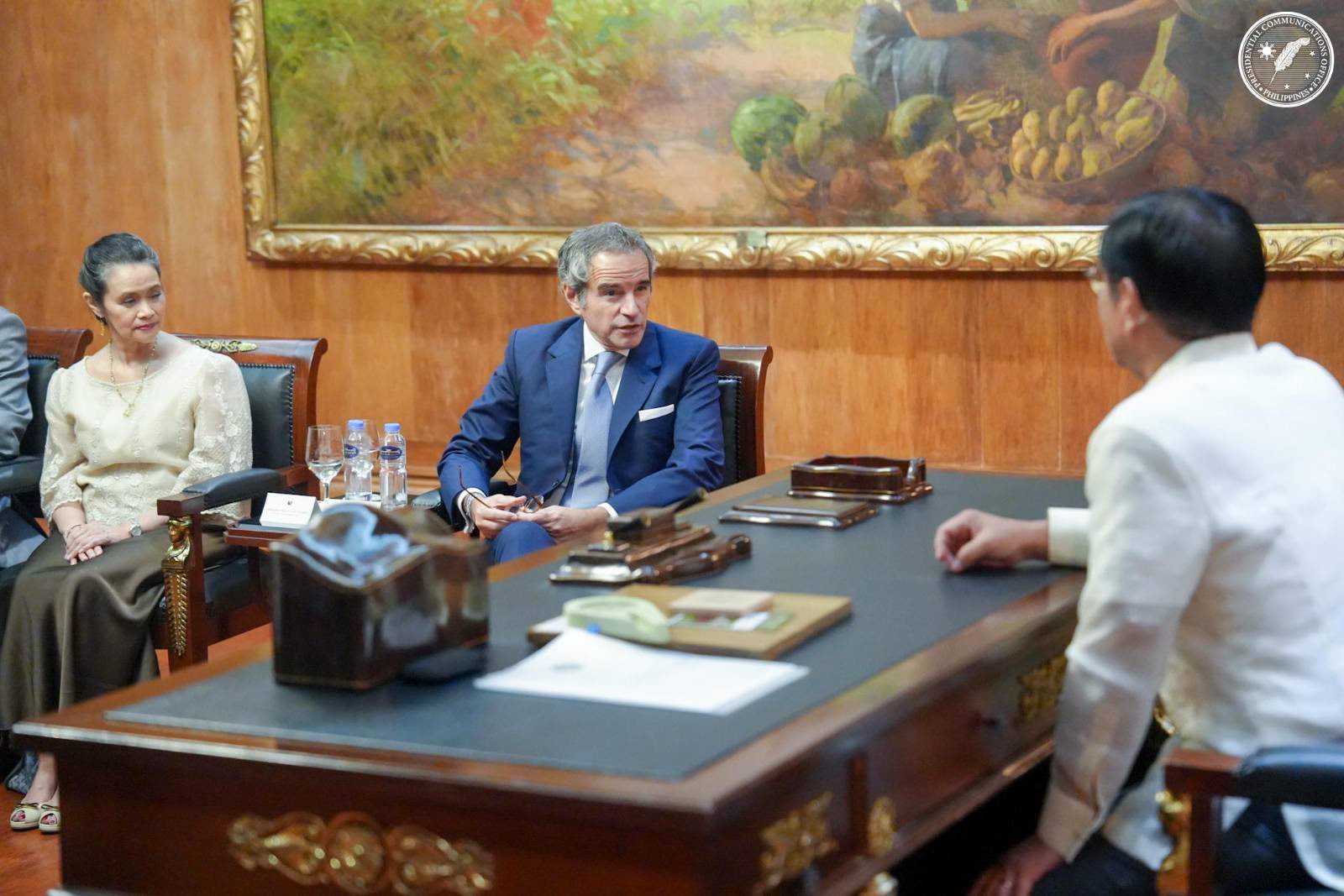
By Joyce Ann L. Rocamora | Philippine News Agency
The International Atomic Energy Agency (IAEA) is eager to help the Philippines identify the right systems and technologies to support its nuclear energy ambitions, its chief said Tuesday.
Speaking on the sidelines of the International High-Level Forum on Nuclear Technology (NUTEC) Plastics in Pasay City, IAEA Director General Rafael Mariano Grossi cited alternatives and newer nuclear technologies beyond power plants, including small modular reactors (SMRs), that countries like the Philippines could tap.
“[W]e are going to establish mechanisms for further cooperation between our technical experts and the experts here, so we can make this more systematic in a certain sense and see what is more adaptable, what kinds of reactors would be eventually more adaptable to a situation like the one you have here,” he said.
Grossi, who paid a courtesy call on President Ferdinand R. Marcos Jr. on Tuesday, said the Chief Executive is “very enthusiastic” about nuclear energy, which gives the country a fair advantage if it is to achieve its target to integrate nuclear energy in its energy mix by 2032.
“He’s aware of the new developments, small modular reactors, and different alternatives that exist there. This, I think, is an excellent basis because in some other countries, technical people have to inform their political decision makers,” he said.
“Here, I think you have a president that knows a lot about that. So the conversation was very substantive, I would say,” Grossi added.
The Philippines aims to have commercially operational nuclear power plants by 2032, with at least 1,200 megawatts initially entering the country’s power mix to gradually increase to 4,800 megawatts by 2050.
Beyond power, Grossi said the IAEA is “fully committed” to support Manila in exploring “wider peaceful applications” of nuclear science, including in addressing plastic pollution.
Plastics upcycling
Grossi and Marcos led the opening of the two-day high-level gathering, bringing together ranking officials and foreign investors to examine how nuclear science and radiation technologies can support countries in recycling difficult plastics.
The Philippines is one of nine pilot countries leading the work on radiation-enabled plastics upcycling and is set to showcase on Wednesday the Post-Radiation Reactive Extrusion (PREx) Prototype House.
The PREx project, led by the Department of Science and Technology–Philippine Nuclear Research Institute (DOST-PNRI), uses electron beam irradiation to modify the polymer structure of mixed and low-value plastic waste, which can then be processed into tiles, bricks, and structural panels.
The PREx Prototype House, a first-of-its-kind structure located at the PNRI compound in Quezon City, is designed as a typical Filipino residence and will be used as a live testbed for environmental exposure, structural performance, and long-term degradation studies.
In the same conference, Grossi signed a new agreement with the Asian Development Bank (ADB) that will strengthen the latter’s technical understanding of nuclear power.
The IAEA chief said this deal will help countries in the region access financing and expertise to meet their energy demand with nuclear power.
